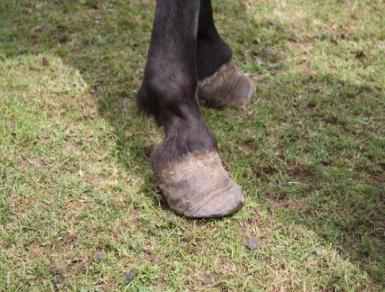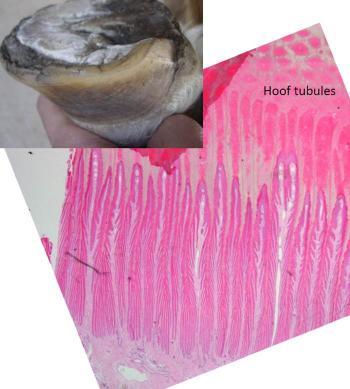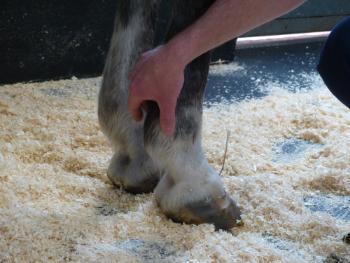Signs of Laminitis
The main clinical sign of laminitis is pain and lameness. However, some horses have episodes of laminitis that cause deformity of the hoof wall in the form of laminitic rings, without pain. These are very important to pick up early as they may indicate your horse has metabolic disease. Getting a diagnosis from your vet could allow you to prevent painful laminitis and founder from ever occurring! Laminitic rings are classically wider at the heel than the toe (Figure 1). They may be accompanied by a flat or even convex sole (dropped sole) and wider white line/cap horn (Figure 2).
Lameness is usually in all 4 limbs, but usually (not always) appears worse in the forelimbs. The pain may be so bad that the horse won’t move at all, but in many cases it’s a little milder, causing a shuffling, short, stepping gait, worse on hard surfaces, and usually with an obvious head nod on turning. In overload laminitis just a single limb can be affected.
Other signs of laminitis can be a hot, painful hoof, with bounding pulses felt in the digital arteries down the back of the fetlock and pastern region (Figure 3). Your vet may look at the response to hoof testers to also help confirm laminitis. It is worth bearing in mind that heat, pain and pulses can also be caused by other conditions in the foot, so always seek advice from your vet.

Figure 1 - Laminitic rings are classically wider at the heel than the toe. These may occur in horses with metabolic laminitis before a painful episode occurs and must always be considered significant – if these are present get your horses tests by your vet for metabolic disease

Figure 2 - Microscopic image of the lamellae of a pony with laminitis. Note the elongation of the lamellae. The hoof wall end shows a ghosting of lamellae where they have been replaced at that end with abnormal keratin – this will grow out of the hoof and be seen at the sole as ‘cap horn’ and widening or separation of the white line

Figure 3 - Feeling for digital pulses around the fetlock